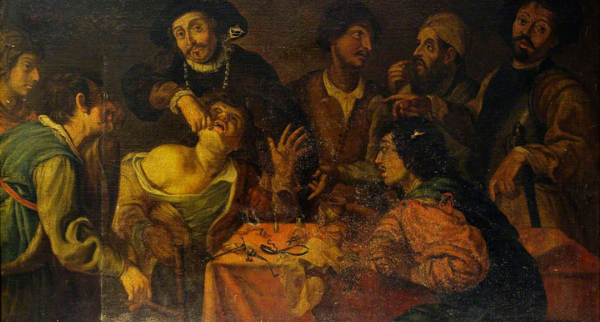The Modern Jester
For hundreds of years, court jesters entertained royal families, important guests, and townspeople throughout Europe and Asia. These performers were known for their ability to dazzle a crowd as well as sometimes getting in trouble for taking a joke about a notable person too far. No matter if they were singing, telling a joke, juggling, or dancing, jesters were able to keep a crowd on the edge of their seats waiting for what came next.
Of course, like all occupations, the jester profession changed throughout history. What started as a silly role to entertain guests turned into a more important position on the royal court.
Famous jesters such as Henry VIII’s jester Will Sommers and Nichola, the jester for Mary, Queen of Scots, quickly became trusted confidants of those they served. Jesters also found their way outside of the royal court, taking to the streets to entertain townspeople for tips.
After the Restoration period, jesters were slowly phased out of the royal tradition 1. While this was sad, these entertainers were hardly going to take a backseat. Jesters evolved and still found ways to influence modern culture.
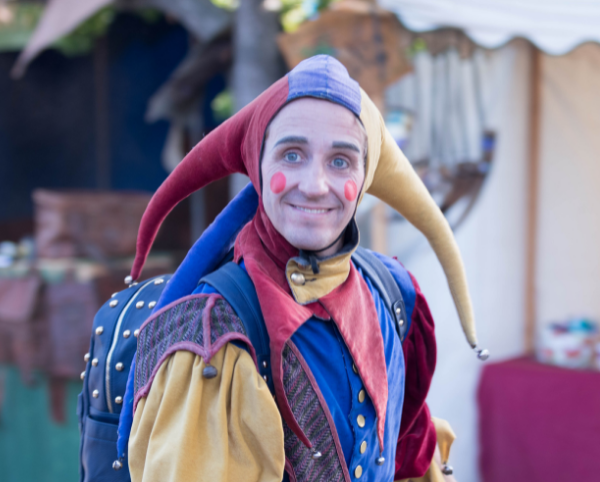
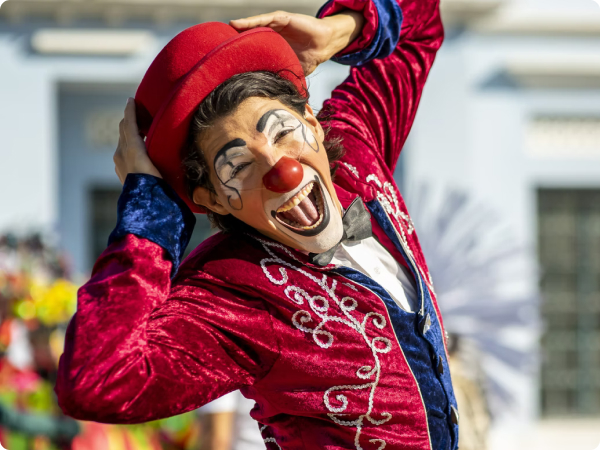
The modern clown, whether you see one at a child’s birthday party or in a parade, has ties to jesters of the past 2. In fact, the colorful clown garb that the entertainers are known for is said to be adapted from the court jester’s colorful hat and costume.
Jesters, whether in the past or present, want to be noticed and catch the attention of passers-by. What better way to do this than to dress in bright colors?
Over time, each entertainer put their own spin on the costume, slowly adding in face paint and other signature items. Today’s clowns still aim to keep the attention of the crowd, whether by juggling, making balloon animals, honking a horn, or acting silly….just like the jesters of the past.
Though everyone knows the jesters who served kings and queens, they were not the only fools being employed. Noble-owned jesters served as personal entertainers to wealthy aristocrats, maintaining an intimate connection within their households 3.
Chosen for their exceptional comedic abilities, intelligence, and wit, their performances extended beyond mere entertainment to include social and political commentary.
In fact all around the world you can find examples of jesters that span for thousands of years, both in noble households and common entertainers. They are the very roots of our modern entertainers today.
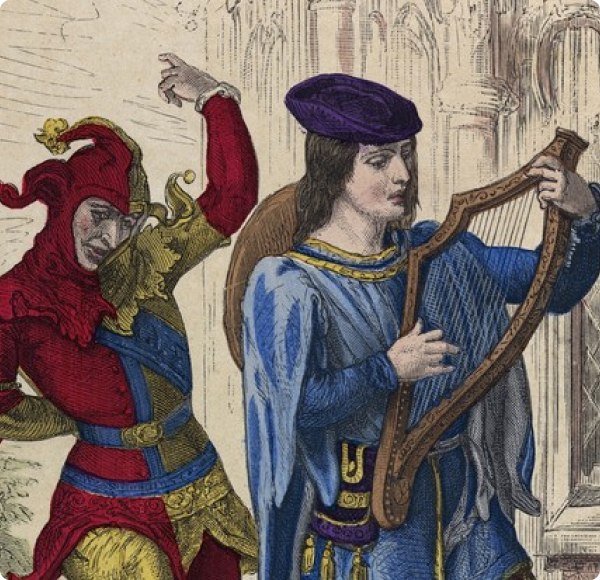
Medieval Court Jester | History Extra
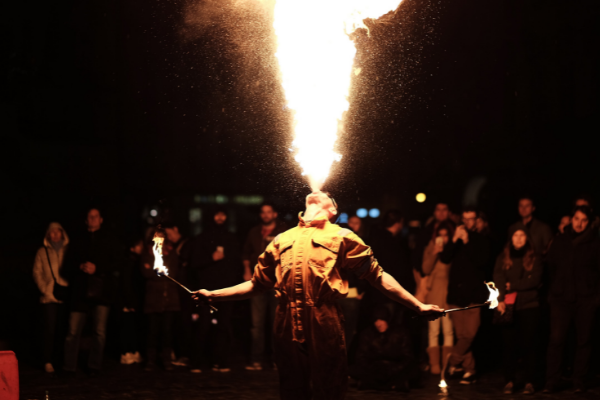
Photo by Alex Alvarez
Street Performers
Today’s street performers, sometimes called buskers, are another modern adaptation of the jester 4. You can find street performers in almost every big city around the world. While it is difficult to count the number of street performers, estimates project there are more than 40,000 licensed street performers around the globe.
They are musicians, statue performers, magicians, singers, and other entertainers. Typically, they perform for tips. The better they perform or impress the crowd, the more likely they are to receive more tips in their bucket. Of course, most performers prefer monetary tips but some performers are happy to receive other gratuities like gifts or a drink.
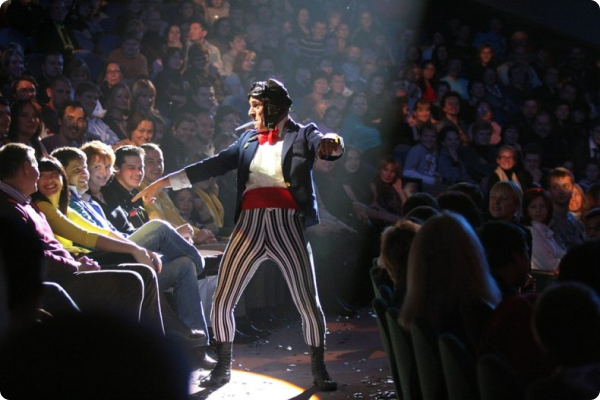
Comedians and Musicians
Stand-up comedy and live music are a call back to the jester tradition as well. Today, comedians can perform in small clubs or large theaters. They even perform on television with Netflix specials. Recently, comedians have taken to performing online, telling jokes for anyone who will listen and share their link with a friend. Similarly, musicians can perform in small or large venues. They are also performing online, hoping for a big break that will catapult their fame.
Jesters of the past surely would have found themselves fascinated with the opportunity to share their tricks and stories online, reaching even more people than they could in the royal court.
Traveling Entertainment Troupes
After the court jester tradition was all but eliminated after the Restoration, jesters gathered together and began traveling in groups to entertain in different cities or towns. Today, you can see this tradition reflected in any traveling entertainment troupe.
Examples can include the modern carnival that moves around from town to town with rides, refreshments, and performers.
Other types of traveling entertainment troupes are circus acts, traveling with their big tent, animals, jugglers, and trapeze artists. Even more complex acts like Cirque du Soleil are rooted in traveling jester tradition.
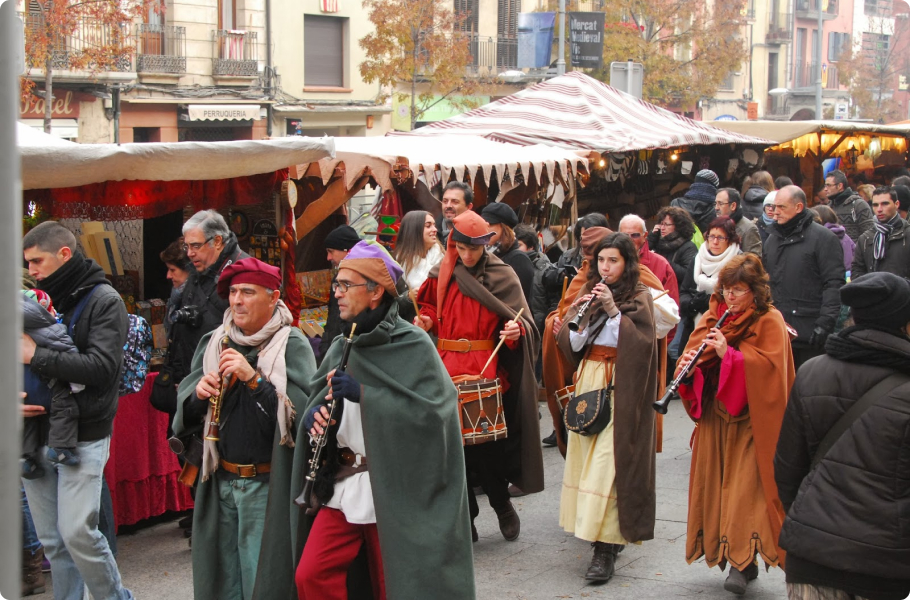
Medieval Fairs
Finally, sometimes the best form of jester tradition is to copy it. Today, you can find Medieval or Renaissance Fairs or gatherings across the world. During these festivals, people are encouraged to dress up (or not) and experience life in the Medieval Era 5. You’ll find turkey legs and goblets of wine as well as knights trying to impress princesses. Of course, you’ll also find jesters
Jesters at Renaissance Fairs or gatherings dress in traditional garb, almost always with a signature hat, and tell jokes that are sometimes at the expense of a person passing by. You can find them juggling, singing, playing an instrument, or even performing magic tricks with kids in the crowd. This is perhaps the most appropriate form of flattery that honors the jesters of long ago.
The court jester tradition may have slowed down after the Restoration, but it certainly did not die. Instead, creative entertainers found new ways to reach crowds and share their love for a good story. Their story lives on today, though more modern of course.
Resources:
- Perry, T. (2022, April 29). Court jesters in medieval England. Oxford Castle & Prison. https://www.oxfordcastleandprison.co.uk/about/news/court-jesters-in-medieval-england/#:~:text=The%20tradition%20of%20court%20jesters,families%20did%20still%20employ%20jesters.
- Clownopedia, C. T. (n.d.-b). Court Jester. Clownopedia. https://clownopedia.fandom.com/wiki/Court_Jester
- What was life like for a court jester? (2024, October 10). HistoryExtra. https://www.historyextra.com/period/medieval/what-was-life-like-for-a-court-jester/
- Yianitsas, L. (2017, October 5). Buskers: The Interesting History of Street Performers. Foo Foo Festival. https://foofoofest.com/2017/10/buskers-the-interesting-history-of-street-performers/#:~:text=Busking%20has%20a%20long%20history,travel%20from%20coast%20to%20coast.
- HolyClothing. (n.d.). The history of Renaissance fairs. HolyClothing. https://holyclothing.com/blogs/news/history-of-renaissance-fairs?srsltid=AfmBOopAH9MBeK6M7FfGxvRJQZBpS7aKZt3d9HuMW0rT-CHJ3fUEawvY

